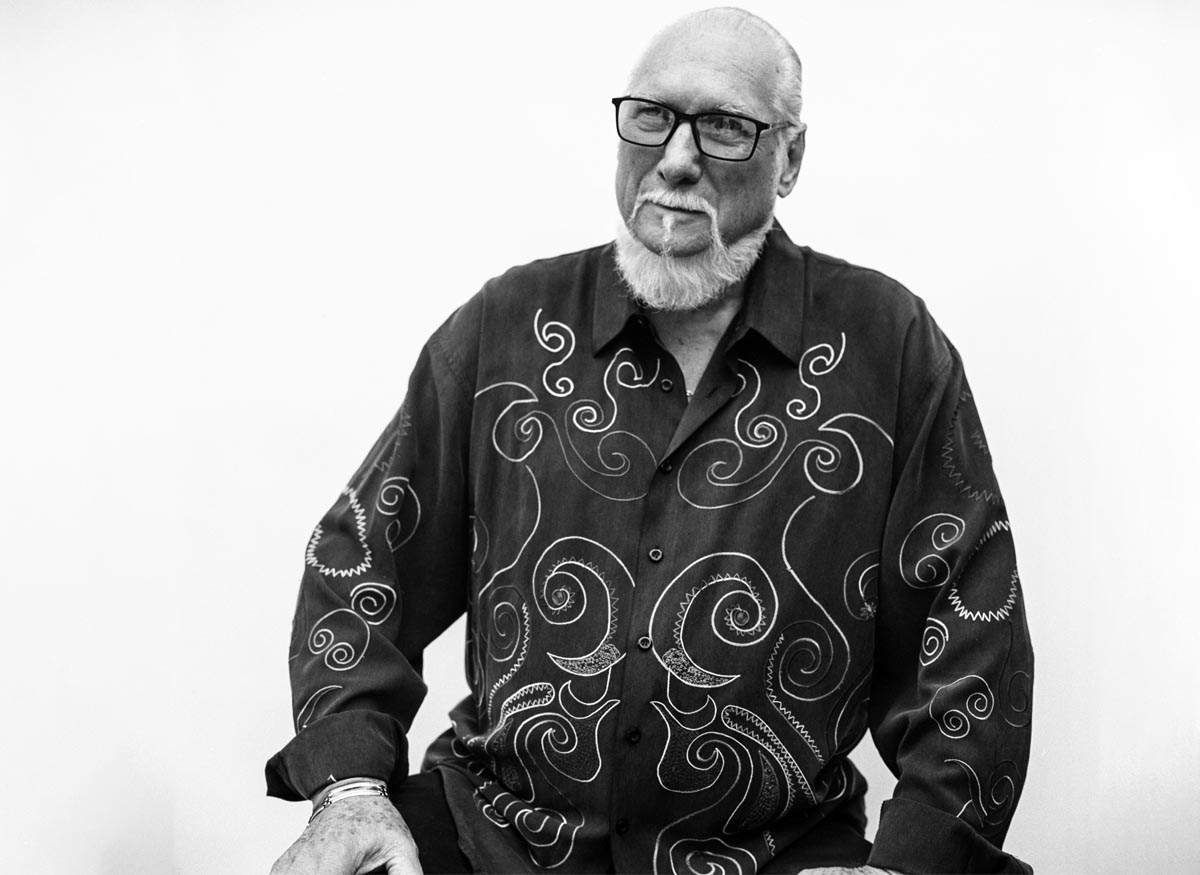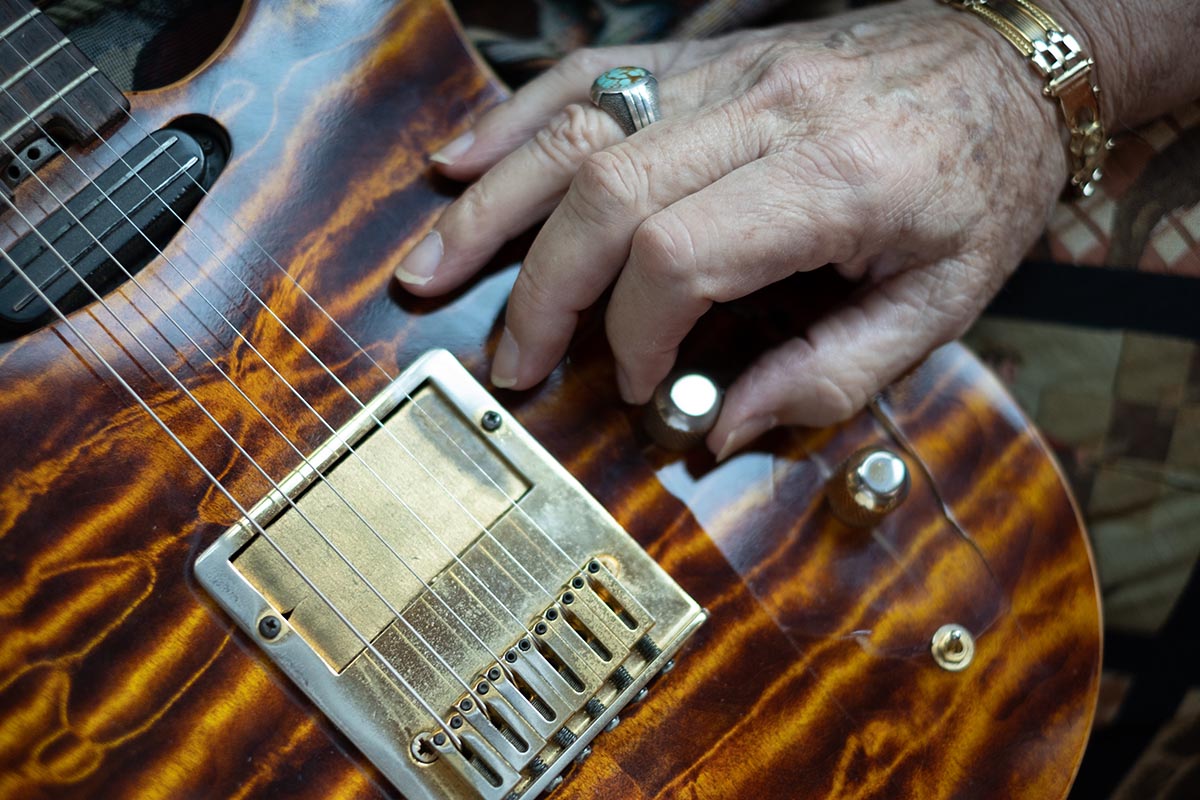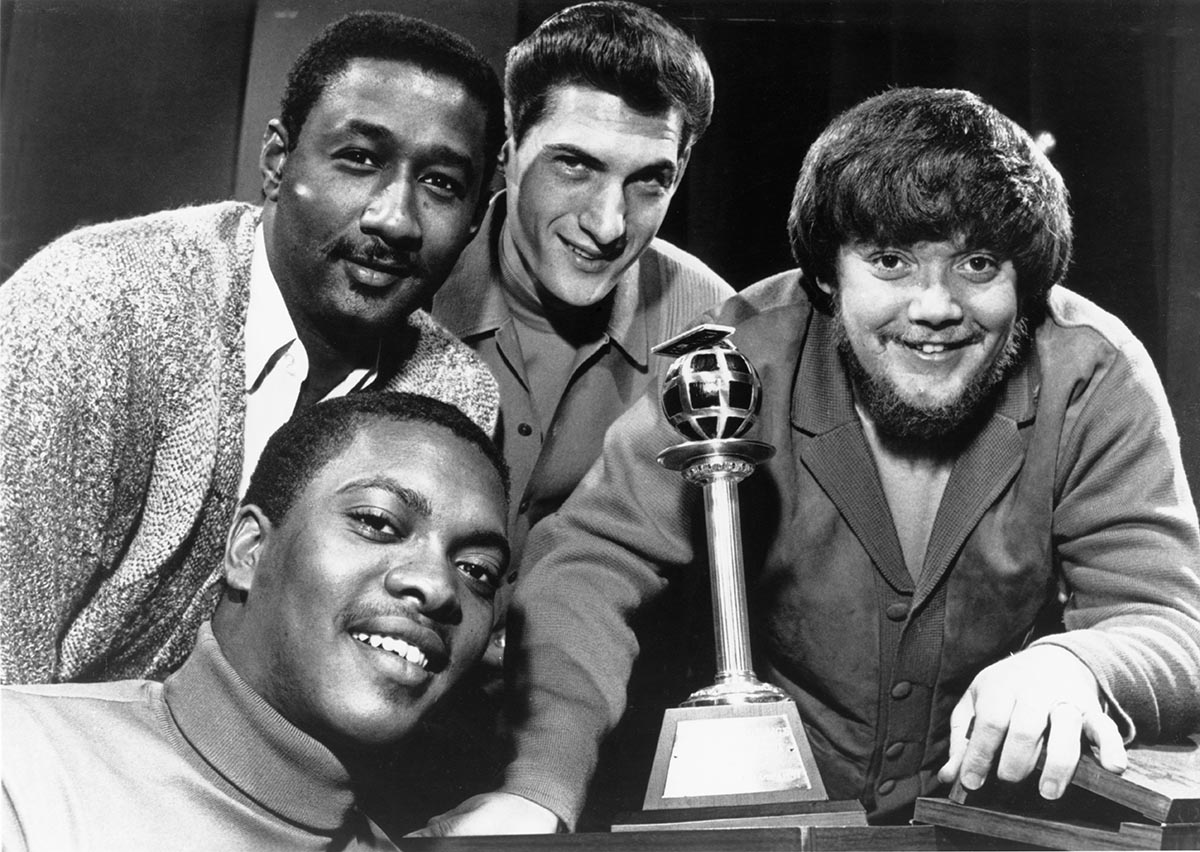Steve Cropper‘s 5 tips for guitar players: “I always look at my guitar before playing and say, ‘If you don’t play good tonight, you’re firewood in the morning!’“
Best of 2021: The Stax Records six-string legend shares 60 years of music-making wisdom, reminding us that tone is always in the hands

Best of 2021: In his 60-odd years working as a professional musician and producer, Steve Cropper has pretty much seen it all, and has the stories to back it up.
He was barely out of his teens when he was scouted by Stax Records president Jim Stewart, who hired him to put together the label’s house band, Booker T. & The M.G.’s and also work as their A&R man.
It would lead to him co-writing, producing and playing on many a legendary recording, perhaps most famously of all, Otis Redding hit (Sittin’ On) The Dock Of The Bay. He would then go on to collaborate with the likes of John Lennon, Ringo Starr, Albert King, Jeff Beck Dolly Parton, Rod Stewart and many, many more.
This year he’s releasing Fire It Up, which he regards to be his first “proper” solo album since 1969, though admittedly he’s been an extremely busy man over the years, so it’s not quite the whole truth…
“Well, I’ve had to explain that because everyone seems to run with it,” he laughs, speaking to MusicRadar from his Nashville office. “It’s not the first one since my debut, I’ve released many albums, but they were all about the songs and the singing. This time I’m not singing anything and it’s a good thing I’m not. I’ve been asked many times ‘Why don’t you find a singer?’ and well, I got one. And Roger [C. Reale] is doing a great job.
“To be honest, I’m glad I’m still around for it and I’m very proud of this new record. It went number one on the Billboard Blues chart the other week and stayed in the top five for a while, which is pretty good. I’ve spent the last nine and a half years in and out of the studio... then there’s the other 50 before that!”
Booker T. Jones once said ‘Cropper gets his sound out of his hands!’ and that’s true. I didn’t need pedals to get the sound right. I get my tone using my hands.
For the recordings, Cropper stuck with his one-of-a-kind Peavey going direct through the desk, and also fed into a valve amp, with little need for anything else. He openly admits pedals have never really played much of a part in his sound and he prefers the idea of using a good guitar and a good amp to their maximum potential.
Want all the hottest music and gear news, reviews, deals, features and more, direct to your inbox? Sign up here.
“On the rhythm tracks I’m going straight through the board but for the lead licks I was using a Victoria amp,” he explains. “It’s a handmade Tweed kinda thing. I had zero pedals with me. My guitar is always wide open. The tone is up and the volume is open. The rest of it I get out of the amp.
“On stage I might use the volume thing every now and then to move it around. I might use my little finger for the tone control, but usually everything is all the way up and stays there. I like to hear what’s coming out of my amp, otherwise I can’t feel what I’m playing.
“Booker T. Jones once said ‘Cropper gets his sound out of his hands!’ and that’s true. I tried some things out back in the 70s when I was doing sessions. I got all the MXR pedals because in those days that was all that was available. Now there are loads of other companies, but even back then I never used them. I didn’t need them to get the sound right. I get my tone using my hands.”

Looking back on his career, he explains there’s some blurriness due to the sheer rate of speed Stax Records were working at during the mid to late 60s – churning out soul and RnB hits in abundance. The two days he spent in the studio making (Sittin’ On) The Dock Of The Bay with Otis Redding, for example, were very much all systems go...
Otis was clowning around between takes trying to do seagull sounds. It sounded like a dying crow to me but anyway
“We had that Otis Redding record pressed and with the disc jockeys five days before Christmas in 1967,” continues Cropper. “Everything was rushed! We did that record in two days. I remember Otis calling me from the airport when he flew in, saying ‘Just seeing if you’re at the studio, I don’t need to talk now but I’m coming down now and I’ve got a hit!’ And he did.”
The pair worked together at Stax Studios in Memphis and ending up piecing together one of the biggest singles of the following year – though sadly its release came after the tragic plane crash that killed Redding, only a handful of days after their final session together.

“It was unfinished, like all of his songs,” recalls Cropper. “So I helped him with some of the lyrics and wrote the bridge and the ending. We never really came up with anything for Otis to sing at the end so he would just make up stuff. He didn’t have anything so he just started to whistle. And he didn’t have that great a voice for it, so the engineer told him that. He was clowning around between takes trying to do seagull sounds. It sounded like a dying crow to me but anyway [laughs]!
“Before I had to mix it, we had decided we’d have background sounds. I was sitting in the big control room to do the guitar licks and amplify the gull sounds by doing the little trills. That’s when I got the idea for the gulls and the waves! I remember the last time I saw Otis. He popped his head into the control room on a Friday afternoon saying, ‘I’ll see you Monday’ and I said it back. And that’s the last I heard from him. The plane went down on Sunday.”
Here the hit songwriter and producer serves up his five tips for guitar greatness...
1. Remember variety is the spice of six-string life
“I’ve got a weird career. I was brought up on country music and church singing. When I first heard rhythm and blues, I was only 10 and it really impressed me a lot. I never looked back after that… it’s the greatest music I’ve ever heard.
“But I’ve also had a fairly well-rounded career, I would say. The most fun I ever had was with John Belushi and The Blues Brothers. People don’t believe me but me and Donald ‘Duck’ Dunn [bass] played exactly how we did in high school, we didn’t know anything!
“One of the first groups I produced with Columbia was one called Dreams, back in the early 70s. Then we moved from Columbia to RCA and that’s when I started producing José Feliciano. I did one in Memphis and two in his studio in Orange County, right after he’d been blackballed and banned from the radio because of his rendition of the national anthem at some ballgame somewhere. He was just a Puerto Rican dude paying his respects...
When I first heard rhythm and blues, I was only 10 and it really impressed me a lot. I never looked back after that… it’s the greatest music I’ve ever heard
“He didn’t expect them to take him off the air. Other people had gone out and butchered that song well and good across the field. But anyway, we didn’t get much airplay over here in America but still went gold in six countries. That’s pretty darn good, I think. He’s one of the finest guitarists on the planet, I want everyone to know that.
“People always ask stupid questions like who is my favourite electric guitarist and I always say José. And they say, ‘Steve, but he’s a flamenco player!’ And I say, ‘Yeah but you’ve never heard him play, I’ve seen him play electric guitar – having done three albums with him!’ He is crazy. He can play both parts of The Allman Brothers stuff at the same time, doing Dickey Betts and Duane Allman in one go.
“Jose had another talent, he had this special voice where he could sing harmonies to himself whenever he wanted to. He sat in with us not long ago when we came out with a new album. We did a club up in New York and he came and played with us.”

2. Answer the phone when it rings!
“That’s my secret, anyway! Raise your hand when they ask for volunteers. I remember looking around and no one else would have their hand up. So they’d say, ‘Alright Cropper, you’re on!’ It paid off I guess. No one really talked about Neil Sedaka but I did. We ended up doing a number one record. He was so incredible to work with, he even played kazoo at one point. Everything we did in one day ended up on the record, with him on piano and singing.
“He’d come back into the control room and say, ‘That’s a hit, that’s a hit, and that’s another hit!’ And he was right. The reason we were there was because he’d had a hit record with Laughter In The Rain and I played on the session right after it, because the record company wanted more songs from him.
No one really talked about Neil Sedaka but I did. We ended up doing a number one record. He was so incredible to work with, he even played kazoo at one point
“Many years later, the phone rang and I got to play with George Harrison at the 30th Anniversary Celebration Bob Dylan did at Madison Square Gardens. I came off stage and someone asked me how many songs we played. I didn’t have a clue, but was told it was 27 songs or over. My main memory was the finale, when Johnny Cash played. I was still up there... stood next to Johnny Cash! It was a great evening all round.
“Paul McCartney and I never recorded together, but I got to play on one Lennon record and a few Ringo albums, on tracks like You’re Sixteen which was a number one. I didn’t know The Beatles were fans of my work until later. I felt very honoured when a guy called me about doing a video he was making on John Lennon’s small square jukebox. I’d produced and played on three of the songs on there, which was pretty cool, including Green Onions and In The Midnight Hour.”
3. Learn how to reinvent yourself
“What’s the secret to great blues playing? I don’t know if there is one but I’ve told people in the past be careful what you play on sessions, because you might get asked to play it again sometime. Guitar players today play exactly what they did in the studio on stage, or at least pretty close. In the early days, if you came in playing like how they do now, it probably wouldn’t have even been recorded!
“Guys like Jonny Lang and Kenny Wayne Shepherd are ahead of their game I think. They’ve turned out to be the greatest around now, the forerunners of modern blues. And from personal experience, I can tell you Jeff Beck just gets better and better and better. The older he gets, the better he gets. He was great 100 years ago. He’s still great now. Okay, it wasn’t quite 100 years ago, it was the 70s when I produced the fourth Jeff Beck Group album with Going Down on it...
Guys like Jonny Lang and Kenny Wayne Shepherd are ahead of their game I think. They’ve turned out to be the greatest around now, the forerunners of modern blues
“That was like a ‘Holy mackerel!’ moment with my eyes open and jaws on the floor. I knew I wasn’t the world’s worst guitar player but I also knew you couldn’t get that sound in that position on that guitar… and he did! Whatever you put in Jeff’s hands, he can make it work. I learned I wasn’t as good as him. I had to reinvent myself after that and The Blues Brothers to get a little better. Because, in that band, I was playing next to Matt Murphy, who was one of the greatest on the planet. He was incredible to be around because he could also play rhythm.”

4. Trust the instruments you use
“I can’t play like I used to… nobody else is willing to admit, but I am! My hands just won’t do what my brain’s telling them to do anymore. Nobody knows, as long as you’re doing the song they don’t care. I care and notice the difference...
“I don’t warm-up or anything – when they say my name I just walk out and go – so I always look at my guitar before playing and say, ‘If you don’t play good tonight, you’re going to be firewood in the morning!’ Yeah, at times it can feel like my guitar doesn’t want to talk to me (laughs).
“Back in the day my main guitar was a Tele but now it’s a one-of-a kind Peavey. I played a Peavey Generation for years and then I had a Cropper Classic that was out for about seven years. I have several of them and they’re all set up right, but I’ve never played one live because I’ve never needed to. So I went from the Generation series to this prototype Peavey. It’s not a prototype though, they don’t plan on making another one again. They made it for a birthday thing and I stuck it in the corner for a long time and then got it out. It just eats all the other ones alive.”
I wish I still had that Esquire I used on that first Booker T. & the M.G.’s album.
“I wish I still had that Esquire I used on that first Booker T. & the M.G.’s album. I got it cheap from somebody who was about to throw it away. I fixed it up, sanded it down and painted it candy apple red, but I didn’t prime the guitar so it leaked into the wood and turned purple. Everyone told me not to change that, leave it that way. So I had that purple guitar for all those years and I played it on Booker T and Otis Redding stuff, as well as using Telecasters.
“The Esquire I used on (Sittin’ On) The Dock Of The Bay was a different one. At that time I had lent out my old purple one because I wasn’t using it as much on sessions. What I didn’t know was that it was dropped off at somebody’s house and they thought it was theirs, but it wasn’t! Even when I went to Peavey later on, I was still using Telecaster-style guitars, so that never changed much.”
5. Make ‘Em Dance!
“If anyone wanted advice on writing a hit song like Sitting At The Dock Of The Bay, I’d tell them the same thing Tom Dowd told me, which is starting writing on the downbeat. Count one, two, three, four and go right into it. That will make your chances of making it a lot stronger than writing on the up.
“If it starts on the one, that makes people move into it… if they dance, that is! That’s what you go for. So if you’re not shaking your butt two or three bars into Fire It Up, you must already be dead.
If you’re not shaking your butt two or three bars into Fire It Up, you must already be dead
“We all treat our music differently. With Albert King, we made his songs very original. When Booker and William Bell wrote Born Under A Bad Sign, what a great song it turned out to. I’m sure it’s been done in different keys, but there are some keys you just can’t play that song in.
“I think I put the song in C# but it was originally in C. Being around Albert was amazing. Sadly, he really hadn’t made much money at all, maybe from his live shows but not his records. He was so talented – all we did was take old blues songs he was accustomed to and turn them into dance records.”
- Fire It Up is out now via Provogue.
Amit has been writing for titles like Total Guitar, MusicRadar and Guitar World for over a decade and counts Richie Kotzen, Guthrie Govan and Jeff Beck among his primary influences. He's interviewed everyone from Ozzy Osbourne and Lemmy to Slash and Jimmy Page, and once even traded solos with a member of Slayer on a track released internationally. As a session guitarist, he's played alongside members of Judas Priest and Uriah Heep in London ensemble Metalworks, as well as handling lead guitars for legends like Glen Matlock (Sex Pistols, The Faces) and Stu Hamm (Steve Vai, Joe Satriani, G3).
